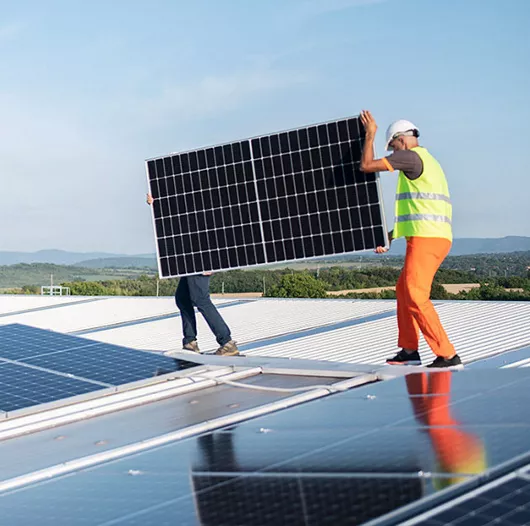Now is the Time to Accelerate the Clean Energy Transition


Clearly, there is a crisis taking place in global energy markets, accelerated by events in Ukraine. Even during this crisis, now is the right time to accelerate the energy transition. We need to move away from fossil fuels toward more sustainable, renewable energy sources. The urgency of this challenge is a key reason Hitachi is sponsoring Climate Week NYC this year.
The clean energy transition depends on using electricity to power a much broader cross-section of the global economy. Most importantly, we need to electrify transportation, but also a wide range of industrial processes, things like mining, metals production, process heating and more. We also need to ensure that this electricity comes from clean, renewable, and net zero sources – whether it be wind, solar, or hydro.
This transition may seem monumental. There is some truth to that, but it is also true that the technology needed to make the energy transition a reality is available and commercially viable today.
Hitachi Energy is deeply involved in electrification, globally. We provide the infrastructure and enabling technology to get electricity from where it is generated to where it is needed, reliably, efficiently, and safely. We are in a unique position to understand the nature of this challenge and how it can be met.
Let’s not underestimate the challenges associated with shifting to clean energy at scale. First, renewable energy is often produced in remote, rural areas or out at sea. In many cases, particularly here in North America, we don’t yet have the grid infrastructure in place to get that power to where it is consumed.
Also, wind and solar power can’t be produced on demand – they depend on things like weather, location, and time of day. As a result, we need technologies like large-scale energy storage, high-capacity, long-distance transmission, and advanced digital control systems to compensate for those limitations.
Renewable sources are also more distributed than traditional, thermal power plants. This adds a great deal of complexity to power grids, which were traditionally designed to deliver power from large, centralized generation sites to homes and businesses nearby. And to fully realize sustainability goals through electrification, we need distributed energy resources as well as large renewable generation plants.
Fortunately, there is a range of digital technologies available to help us manage this complexity; the smart grid technologies and asset management solutions we have been discussing for many years now are in increasingly wide use and getting smarter all the time.
The key point is, we have the technology and know-how needed to get the job done, today — not years or decades down the road. We simply need to accelerate the process and eliminate impending roadblocks.
This isn’t something that utilities, renewable energy developers, or their technology partners – like Hitachi – can accomplish on our own. We need governments, regulators, and other stakeholders to join in.
We have already seen good progress. The U.S. Federal Government, for instance, has been supportive of the development of renewable energy sources, like offshore wind. The Canadian Federal Government is supporting the retirement of fossil fuels used in electricity production in Nova Scotia. State and provincial governments have pitched in as well, setting targets for greenhouse gas emission reductions and providing incentives to help meet them.
But we need more.
One thing government and regulators are uniquely well-positioned to do is remove obstacles. This can take a variety of forms, from streamlining siting and permitting processes, to clarifying requirements like changing the permissible uses of technologies like batteries, which can play an important role in stabilizing modern power grids. These simple steps can help make the development of big infrastructure projects more transparent and less risky, encouraging private interests to get engaged.
Financial help is also welcome. There is private capital ready and interested to come into the market to help solve some of the challenges I’ve outlined, but risks need to be shared. If governments are willing to partner with developers, the process could move much more quickly.
Climate change represents an existential threat. The only way to confront it successfully is with active cooperation between government agencies and regulators, industry organizations, developers, power grid operators, and technology suppliers. Together, we can make a sustainable energy future a reality for everyone.
Bill Strohecker is Country Managing Director, Canada, Hitachi Energy
This story first appeared on ClimateWeek NYC
Bill Strohecker is Country Managing Director, Canada, Hitachi Energy